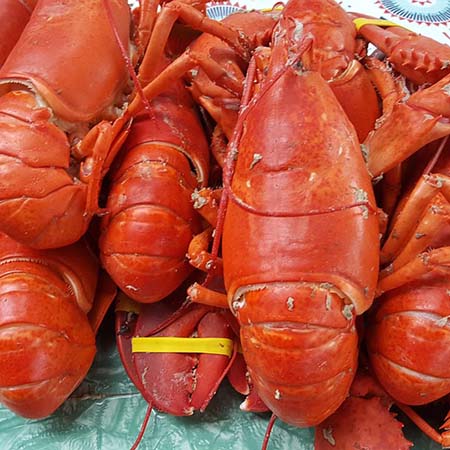Surprising Seafood Facts You Probably Didn’t Know
New England is known for our seafood. There are many interesting facts about fish and shellfish that you might not know. Here are 10 of our favorite seafood facts.
1. Lobster Used to be Low-Class Cuisine
 Today, lobsters are served at upscale restaurants and considered fine dining. These crustaceans haven’t always been high-class cuisine. During colonial times, lobster was a staple food for the underprivileged. They were eaten by prisoners and the poor because they were cheap and abundant.
Today, lobsters are served at upscale restaurants and considered fine dining. These crustaceans haven’t always been high-class cuisine. During colonial times, lobster was a staple food for the underprivileged. They were eaten by prisoners and the poor because they were cheap and abundant.
2. Lobsters’ Claws Serve Different Purposes
Lobsters claws are two different sizes: one large and one small. They use each claw for a different purpose. The larger claw is used to break open the shells of their food (crabs, clams and other lobsters). It is extremely powerful with the ability to exert up to 100 pounds of pressure. They use their smaller claw to tear up the soft flesh of their food as they eat.
3. Crawfish Were the First Officially Claimed as a State Seafood
Crawfish are freshwater crustaceans that look like mini lobsters. They are also known as crawdads, crayfish, mudbugs, and yabbies. They are a staple in Cajun cuisine. Louisiana has claimed them as their official state crustacean. It’s no wonder since 95% of the crawfish in the US are harvested in Louisiana.
4. Crabs Can Thrive Where Other Seafood Can’t
Crabs can be found in some of the most diverse environments in the ocean. They can thrive where many other sea creatures can’t. They have been discovered under the ice in Antarctica and thousands of feet below sea level around volcanic vents.
5. Crabmeat is Graded by What Part of the Crab It’s From
The priciest grade of crabmeat (large and jumbo lump pieces) are from crabs’ muscular swimming legs. This meat has a milder, buttery flavor. Lower grade crabmeat or dark meat (which is a darker reddish color) is from the claw. It has a stronger flavor and tougher texture.
6. Seaweed is Full of Nutrients
Bullwhip kelp is the most common seaweed used in the kitchen. It isn’t just an efficient wrapper for sushi. It is packed with nutrients such as iron, bromine, magnesium, iodine, phosphorous and potassium. This brown seaweed also contains vitamin A, vitamin B complex, vitamin C, vitamin D, vitamin E, and vitamin K.
7. Ahi Tuna Can Weigh More Than 300 pounds
Ahi tuna, also known as yellowfin, is one of the largest varieties of tuna. They average around 125 pounds, but they can weigh more than 300 pounds. The largest ahi tunas are found in the Hawaiian waters. A 388-pound ahi tuna was caught by the International Game Fish Association.
8. Dolphinfish was the original name of Mahi Mahi
Mahi Mahi is a sought-after sport fish because of its firm, sweet white meat. In Hawaiian the name means strong-strong. Originally, these fish were known as dolphinfish because they like to swim along the side of boats much like dolphins. Despite the nickname, they aren’t related to dolphins.
9. Millions of Fish Can Be in a School
Schools of fish can have populations in the millions. Fish swim in large groups or schools to protect themselves from predators, navigate efficiently and forage better. They are able to move as a collective body, synchronize their swimming, because of a sensory structure known as the lateral line. It allows them to pick up on vibrations in the water.
10. Red Snapper populations are Recovering from Overfishing
 Red snapper has been prized by commercial and recreational fishermen in the Americas for decades. Its mild flavor and delicate texture make it favorite for many cooks. Their populations were hit hard by overfishing because they mature slowly. Strong management programs have helped rebuild their populations. They should be at sustainable levels by 2032.
Red snapper has been prized by commercial and recreational fishermen in the Americas for decades. Its mild flavor and delicate texture make it favorite for many cooks. Their populations were hit hard by overfishing because they mature slowly. Strong management programs have helped rebuild their populations. They should be at sustainable levels by 2032.
It is a well-known fact that eating 1 -2 servings of seafood a week is good for your health. Stop by City Fish Market to pick up lobster, crab or fish for dinner!


